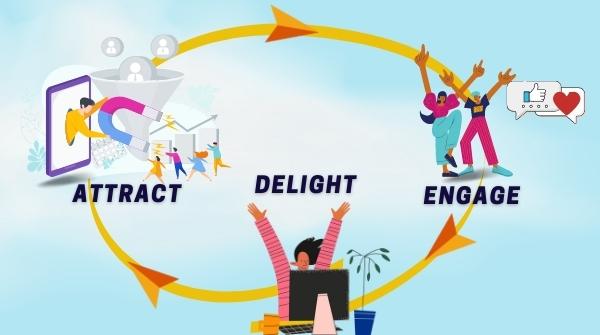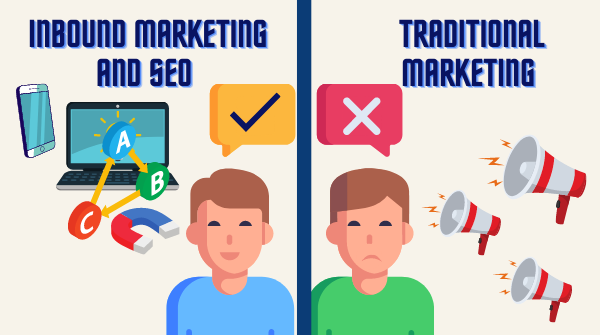How Inbound Marketing & SEO Can Cooperate on Converting Leads to Sales
Written by: Katherine Monestel,DocuSend, powered by MTI
You and your personnel may have knowledge to share that can boost your business. How does this connect with inbound marketing? First, let’s define the term:
“Inbound marketing is a marketing methodology that is designed to draw visitors and potential customers in, rather than outwardly pushing a brand, product or service onto prospects in the hope of generating leads or customers.” Resource
Sharing your knowledge as an expert in your industry adds more value to your business than a pure sales pitch. How many of you dislike receiving marketing phone calls? Yup, me too, not always, but sometimes. It depends on the way they introduce the conversation or whether they call me on a really busy day to sell me a product that I am not interested in.
If making sales calls is part of your job, keep this in mind:
Use the power of human interaction. This is why social media posting is now at the top of a marketer’s to-do list. If you must call, make that first contact via phone call a human-to-human connection—just like you do on social media.
Information, Please!
Nowadays, we like to search for what we need (it´s faster). First, we want the pertinent information about your product to be easy to find. If we’d like even more information, then we call, email or start a chat with your customer support.
Right about now, you should be asking yourself…
How do I make my product easy to find?
Search Engines Rule!
And Google rules the search engine arena.
According to Smart Insights statistics: "The number of people using internet search engines is increasing… We can see the number of daily searches on Google – 3.5 billion, which equates to 1.2 trillion searches per year worldwide."
Now more than ever, Google is giving higher rankings to pages dedicated to helping, giving solutions, and answering common questions. Inbound marketing fits in perfectly with this perspective. For example, one technique is to find the keywords associated with a product and use them to discover what questions are the most asked.
Inbound methodology consists of 3 stages:

Everyone in your company should understand these stages.
Why?
Simply so that they can apply them to interactive web design, product development focused on customers’ needs, and outstanding customer support.
How Is SEO Related to Inbound Marketing?
Often, SEO and marketing groups are each in their own silo. But if inbound marketing and SEO people work as a team, it can bring more traffic and successfully convert visitors into leads and paying customers.
Solid SEO strategies make a healthy website—well formatted, easy to read, and easy to navigate. Knowing how search engines work places your web pages in front of more people when they search for information.
When someone has a problem to solve, inbound marketing makes exactly the right information handy by gathering detailed data about who your potential customers are, what problems they need to solve, and what language they use to describe their problems and search for solutions.
So, inbound marketing and SEO share the common goal of bringing more people to your website.
Why Is Inbound Marketing Winning Out?
We can answer this by first answering another question: What is the difference between traditional marketing and inbound marketing? See the chart below.
| Traditional Marketing | Inbound Marketing |
|---|---|
| Company-focused | Consumer-focused |
| Interrupts an individual’s life | Resolve a problem |
| Talks at the consumer | Collaborative |
These are major differences, wouldn’t you agree?

Google basic principles has these recommendations:

Now to address the main point of this article, How to succeed in inbound marketing & SEO and convert leads to sales:
Work as a team.
All company areas need to focus on the three stages of inbound marketing:
ATTRACT-ENGAGE-DELIGHT
Make life easier for your clients: create content and a website with a great user experience, provide exceptional customer support, and market with their needs in mind. SEO and marketing groups need to work together on this and create strategies based on user satisfaction.
That way, your small business will make a huge difference against your competitors, and users will prefer your product over others.
At DocuSend, we're honored to build continuing partnerships with you, our followers and customers, via our diverse social media channels and through this blog. Helping to prepare your business for success is part of our business by providing you with your own mailroom in the cloud via our state-of-the-art document printing and mailing solution and by sharing with you what we know about making SMBs like yours grow.

